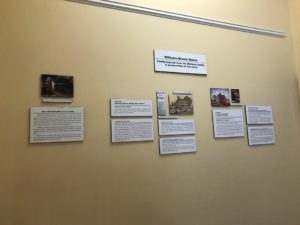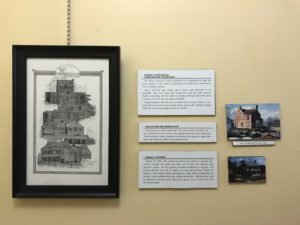One of the most important things when you design exhibitions is understanding the new visitors’ perspectives. For 6 weeks, I had looked around all the exhibitions whenever I have free time, and I could understand them deeply and see the mutual relationships among the exhibitions. However, it is hard to expect that new audiences could get that kind of sound understanding of exhibitions.
After interns had come here, the exhibitions improved a lot in terms of participatory. Compare to before, I believe that a broader age group can enjoy the exhibition. (I know this is totally off-topic, but I always wonder why the physically-engaged experience booths are only for kids. I want to know if elderly are really not interested in that kind of thing or they are.)
As basic information about the Salem museum had already updated on the Salem museum website, I tried to give visitors more delicate and detailed stories than that. But at the same time, I hoped that people would not pass by them because of the overwhelming amount of information. (Also, it was hard to find what is the right amount of the signs because I only could use the two walls for my own exhibitions. Also, the wall was located beside the stairs. *_*…) Anyway, I wanted to let visitors understand the big context of the history of the house at least, so I added subtitles for it.
Also, It was uneasy to picking the right pictures and artworks for the small exhibition. I had to compromise to myself and the process helped me to figure out the most effective way to make up the exhibitions. Thanks to Alex, I could hang a high-quality picture for my small exhibition.
I know that it is a scarce chance to have experience in a local museum as an undergraduate student. And it helped me a lot to decide my career. As interested in gentrification and urban revitalization, it was happy to read all the stories of how the old building could survive with the spontaneous efforts of the local people.
Working in the Salem Museum was not always perfectly happy and joyful, but I can say that I learned a lot. I could feel that my supervisor tried to figure out what I am interested in and docents and other interns tried to help me and considerate the uneasiness that I had to confront all the time because of my English. Everyone in the museum was so kind and ready to give me practical and useful advice. For these reasons, if you are hesitating to work in the museum, I highly recommend you to do an internship at the Salem Museum!
p.s. if you have any hard time with making signs with glue spray, try to use glue stick!







